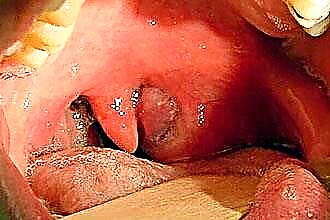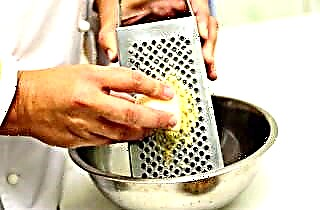Inflammation of the mucous membranes of the nasal passages, or otherwise a runny nose, is accompanied by nasal congestion, strong nasal flow and lack of nasal breathing. Discharge can be mucous or purulent in nature, watery or viscous consistency. To fight rhinitis, you need to know its cause and features of the course of the disease. The fact is that vasoconstrictor nasal drops for children cannot always be prescribed for rhinitis, because, for example, its atrophic form is an absolute contraindication.
Use of vasoconstrictor drops
 Depending on the cause of the common cold, vasoconstrictor drops for children may be prescribed for:
Depending on the cause of the common cold, vasoconstrictor drops for children may be prescribed for:
- allergic rhinitis;
- colds, infectious rhinitis;
- vasomotor rhinitis.
Many experts do not welcome the use of drugs of this group in a child. They are recommended only when there is a threat of complications, such as:
- otitis. The spread of the inflammatory process to the mucous membrane of the Eustachian tube is accompanied by its swelling. The consequence of this is impaired ventilation and hypersecretion in the ear cavities. The drugs are used to reduce tissue swelling, restore airway function and facilitate nasal breathing;
- sinusitis. With the involvement of the mucous membrane of the paranasal sinuses in the inflammatory process, the secretion of mucus increases, and the opportunistic flora is activated. The accumulation of mucus is a breeding ground for microbes, so it is important in treatment to ensure drainage of the sinuses. Medicines are prescribed to improve the outflow of viscous mucus from cavities and restore ventilation;
- tonsillitis. In the case of an infectious rhinitis against the background of immunodeficiency, pathogenic microorganisms can spread to the tonsils of the throat. The consequence of this is tonsillitis;
- adenoiditis. Adenoids are often diagnosed in children. They can become a source of chronic infection, periodically manifesting themselves as adenoiditis. Over time, lymphoid tissue increases in volume, blocking the lumen of the nasal passages and making it difficult for air to pass. With a runny nose, the swollen mucous membrane further worsens nasal breathing, therefore, the use of vasoconstrictor nasal solutions is required;
- tracheitis. Against the background of the absence of nasal breathing, the child inhales cold, unpurified air through the mouth, which can result in inflammation of the mucous membrane of the larynx and trachea. To avoid this, drugs are prescribed to restore the patency of the nasal passages;
- hypotrophy (weight loss). It is important for babies to get enough nutrients every day. This is necessary for the full growth and development of internal organs. In the absence of nasal breathing, the newborn finds it difficult to breathe during feeding, which is why he refuses to breast and cries. If the baby is bottle-fed, it is recommended to use a small spoon to feed the highly adapted formula. Thanks to the preliminary instillation of the nose, breathing is facilitated, and it becomes possible to breastfeed the baby or from a bottle;
- apnea. Frequent apnea is a terrible consequence of nasal congestion. When a child sleeps, his breathing may stop for a while, which is accompanied by an increase in hypoxia and organ dysfunction. For children, this is especially dangerous, since the organs are at a stage of intensive development, so any violations can become irreversible.
Do not forget that vasoconstrictor drugs are only part of symptomatic therapy. The main direction of treatment is to eliminate the cause of the disease (allergen or infection).
Mechanism of action
After instillation of the nasal passages, the drug is absorbed into the mucous membrane and penetrates into the blood vessels. The active substance of the drug has an effect on adrenergic receptors, the stimulation of which leads to vasospasm, that is, vasoconstriction.
A decrease in the vascular diameter is accompanied by a decrease in the severity of tissue edema, nasal congestion, and the volume of mucous secretions. Thus, the patency of the nasal passages is temporarily restored and breathing is facilitated.
Tachyphylaxis (addictive)
A common complication of therapy with vasoconstrictor drugs is tachyphylaxis, or otherwise addiction. It develops with prolonged use of medications in doses exceeding the recommended ones.
Some drugs in this group can maintain vasospasm for much longer than the duration of the therapeutic effect. In other words, the nasal congestion has returned, and the partial vasospasm is still present.
As a result, the person again instills the solution in order to facilitate nasal breathing. Thus, the local blood vessels receive a large dose of the solution, which reduces the sensitivity of the receptors to the vasoconstrictor substance.
In the future, to obtain the initial effect, it is required to instill a larger volume of the drug, which aggravates the course of drug rhinitis. Ultimately, you can instill a vasoconstrictor solution, and the reaction of the vessels will be barely noticeable.
In addition, the natural regulation of vascular tone is disrupted, the reaction to the action of environmental factors changes.
What should you look for when choosing a drug? Of course, the treatment of the child should be carried out by a specialist, but some parents try to cure the baby on their own and purchase medications on the advice of relatives or neighbors.
Before you instill a nose in a child, you should carefully read the instructions, focusing on:
- the composition of the drug, which determines the duration of the therapeutic effect;
- age restrictions;
- contraindications;
- adverse reactions;
- the duration of the treatment course;
- dosage;
- the concentration of the active substance.
The younger the child, the shorter the course of using vasoconstrictor drugs. Drugs in this group should be used no longer than 5 days, however, for a newborn, the course should not exceed 3 days.
Another disadvantage of therapy with the use of vasoconstrictor drugs is the occurrence of systemic reactions. If the recommended dose is exceeded, vasospasm can be observed not only at the injection site, but throughout the body.
As a result, blood pressure rises, heart rate increases, headache and tremors are worried.
Brief overview of drugs
What medications are best used in childhood? The best vasoconstrictor drugs are based on oxymetazoline and xylometazoline.
Now let's look at the types of drops assigned to a child.
Up to a year
A separate group of medicines are nasal drops for infants. They have a minimum concentration of the active substance, therefore they rarely cause side reactions:
- Nazivin 0.01%. It is based on oxymetazoline, so the duration of the vasoconstrictor effect can last up to 12 hours. Most often, this solution is instilled into the nasal passages before bedtime so that the newborn can breathe calmly through the nose throughout the night. Of the side reactions, we single out a decrease in temperature, allergies, drying out of the mucous membrane and a burning sensation in the nasopharynx. Contraindications include individual intolerance to the components of the drug, diabetes mellitus, tachycardia, glaucoma and atrophy of the nasal mucosa;
- Otrivin 0.05%. The duration of the effect reaches 7 hours. The main active ingredient is xylometazoline. It also contains glycerin, which reduces the risk of mucosal irritation.After instillation, a headache, dryness in the nasopharynx, itching in the nasal passages and nausea may appear;
- Nazol baby. The drug is based on phenylephrine, acts mildly, moisturizes the mucous membrane and quickly restores nasal breathing. The effect occurs 4 minutes after instillation and lasts up to 4 hours. The medicine is allowed from two months. It is dripped three times. After the introduction, hyperemia of the skin of the face, burning sensations, disturbance of the cardiac rhythm, dizziness and moodiness may appear. Among the contraindications should be noted hypersensitivity to the components, increased production of thyroid hormones, diabetes, mucosal atrophy.
From one to six years of age
Naphthyzin is contraindicated in children of any age. It has a large number of side effects, is highly irritating to the mucous membranes and has a short therapeutic effect.
 What is allowed for children under six years of age?
What is allowed for children under six years of age?
- Nazivin 0.025%. See description above;
- Sanorin 0.05%. The drug is approved from 2 years old. The active ingredient is naphazoline (like Naphthyzoline), which is also not very welcome for use in childhood. The healing effect lasts up to 4 hours. Contraindications include severe hypertension, glaucoma, chronic rhinitis, diabetes mellitus, hypersensitivity to components, palpitations, thyrotoxicosis;
- Vibrocil. The medicine can be used from one year of age. Today, Vibrocil is widely prescribed in pediatrics, as it is well tolerated by children. Contraindications are presented by individual intolerance to the constituents of the drug and atrophic rhinitis. Quite rarely, after instillation, burning sensations and dryness of the mucous membrane occur;
- Adrianol 0.05%. It is rarely prescribed, only with severe nasal congestion. It contains two active ingredients, namely tramazoline and phenylephrine.
From six years
From the age of six, pediatricians allow the use of vasoconstrictor solutions in the form of an aerosol. Some use them from 3 years old, but it is very dangerous. Complications are associated with a high risk of penetration of the medicinal solution into the ear cavities. This is due to the short auditory tube, as a result of which, when the drug is sprayed, it can go further than necessary.
Medicines:
- Tizine;
- Rhinomaris;
- Xymelin;
- Lazorin;
- Otrivin 0.1%;
- Nazivin 0.05%.
Classification of drugs by duration of effect
There are three groups of drugs that differ in the duration of the vasoconstrictor effect:
- short-acting (up to 4 hours). This group includes drugs with an active substance - naphazoline, phenylephrine, tetrizoline. These medications are most often addictive, so it is better to refuse them;
- medium duration (up to 6-8 hours). The drugs are based on ximetazoline and tramazoline. They have a quick effect, are considered softer for the mucous membrane of the nasal passages of children;
- long-term effect that lasts up to 12 hours. The active ingredient is oxymetazoline. The best drops for children are less addictive.
For children, only proven medicines should be used with a minimum risk of adverse reactions. Choose nasal medications carefully and do not risk your baby's health.



